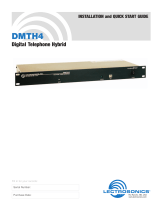
LZT 123 7589 R1A
Contents
Overview ...................................................................................................................5
1. Introduction..............................................................................................................6
Target Users ................................................................................................................ 6
Prerequisites................................................................................................................ 6
Manual Structure......................................................................................................... 6
2. GR47/GR48 Radio Devices ......................................................................................7
About the GR47/GR48 Family................................................................................... 7
Radio Devices in a Communication System ................................................................. 7
Features....................................................................................................................... 9
Service and Support ................................................................................................... 12
Precautions................................................................................................................ 13
3. Abbreviations..........................................................................................................14
Integrating the Radio Device ................................................................................16
4. Mechanical Description..........................................................................................17
Interface Description ................................................................................................. 17
Physical Dimensions.................................................................................................. 18
5. System Connector Interface ...................................................................................19
Overview................................................................................................................... 19
General Electrical and Logical Characteristics ............................................................ 22
Grounds .................................................................................................................... 23
VCC - Regulated Power Supply Input ....................................................................... 23
Battery Charging Input (CHG_IN) ........................................................................... 24
Turning the Radio Device ON/OFF and the External Power Signal........................... 25
Analogue Audio ........................................................................................................ 29
PCM Digital Audio................................................................................................... 33
Serial Data Interfaces ................................................................................................. 36
SIM Card Related Signals .......................................................................................... 40
Service/Programming ................................................................................................ 41
Buzzer ....................................................................................................................... 42
LED .......................................................................................................................... 42
General Purpose Digital I/O Ports............................................................................. 43
Extended I/O capabilities .......................................................................................... 44
General Purpose Analogue I/O Ports ......................................................................... 45
External I
2
C Serial Control Bus................................................................................. 48
TX_ON - Burst Transmission ................................................................................... 49






















